Review: Samsung Galaxy Note9
Aug 16, 2018, 6:00 AM by Eric M. Zeman
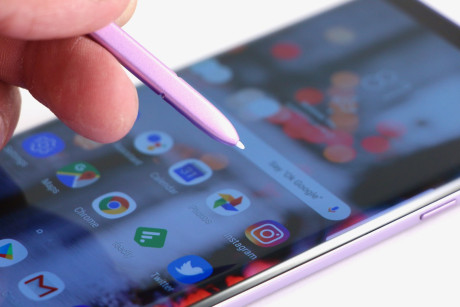

Samsung Galaxy Note9
The Galaxy Note9 from Samsung is a powerful and impressive piece of hardware. This Android phone offers a massive screen, a giant battery, and a killer set of cameras. The stylus defines the Note series and Samsung has made the S Pen even more useful thanks to new features. Here is Phone Scoop's in-depth review of the Samsung Galaxy Note9.
Hardware
Is It Your Type?
The Galaxy Note9 is for those who want the biggest and the best of anything and everything. It's Samsung's technological showcase, stuffed full of the most powerful components and offering the most compelling features. The Note9 is for people who need to get work done, or for people want to be creative, wherever they happen to be.
Body
Samsung has settled into a two-year "tick/tock" cycle for updating its hardware. That means the Note9 is nearly identical to last year's Note8. Samsung included a few key upgrades in order to make the Note9 a more enticing purchase, but the experience remains largely the same.
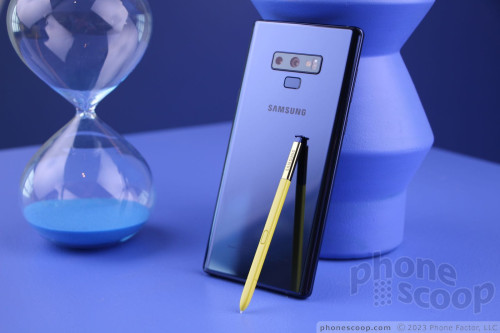
The Note9 is a slim slab of epic proportions. It deftly merges two curved glass panels with a thin aluminum frame. The glass is silky to the touch, the metal strong and reassuring. New to the Note series this year is a fine chamfer along the front and back edges of the metal frame. It's subtle, but perfectly cut into the aluminum. Samsung has mastered the task of bending glass in a way that doesn't interfere with the display. The curves help make the phone easier to hold, even if only a little.
The Note9 comes in four colors, though only two are being offered in the U.S.: blue and lavender. (Black and copper will be available overseas.) Both the blue and lavender are attractive in their own way. The blue is deep and oceanic, while the lavender is rich and creamy. I like that Samsung decided to color the included S Pen a contrasting yellow for the blue model. It's a small, but appreciated touch.
At 6.37 inches tall and 3 inches wide, the Note9 is a gigantic piece of hardware. The relatively square corners don't help. Samsung's own S9+ is fractionally smaller and rounder, yet it feels much more manageable to use day in and day out. The Note9 is a two-handed device that will be too much for some people. It strains pockets. I found it uncomfortable to carry around in some jeans. Adding a case only worsens this situation. You have to want a big phone to like the Note9.
You can't call the quality into question. It's a top-notch phone when it comes to the fit and finish. The Gorilla Glass 5 is expertly shaped and fitted into the rigid chassis. Few phones are its equal. The materials are assembled tightly with perfect seams throughout.
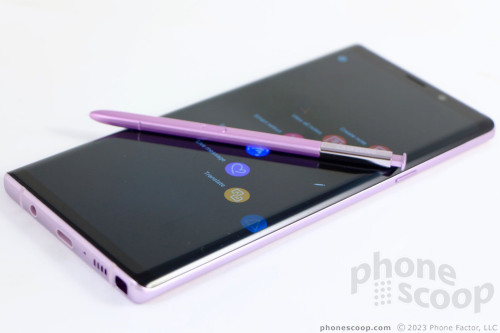
The Note9 is rated IP68 against water and dirt. This means it can sit in 1.5 meters (about 5 feet) of water for up to 30 minutes. You can drop the Note9 into the pool, hot tub, or toilet and it should survive the experience. Get it muddy or covered in soup?Just rinse it off under the faucet for a few seconds. I let the Note9 rest at the bottom of a bucket for a while and held it under running water. It's none the worse for wear.
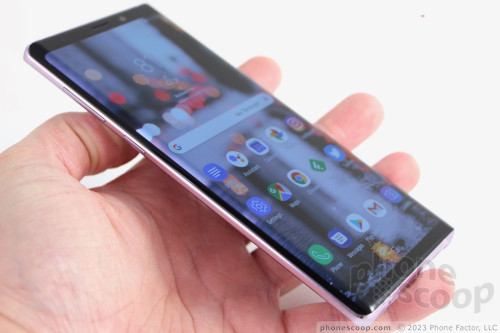
Don't let the Gorilla Glass 5 surfaces fool you; this phone will shatter if dropped onto hard surfaces. Moreover, Gorilla Glass 5 is softer than previous iterations of Gorilla Glass and is thus more prone to scratching.
The "Infinity Display" means you have a phone with nearly no bezels. The display measures 6.4 inches across the diagonal. The thinnest strips of black line the sides of the screen, the chin is kept to a minimum, and the forehead is just big enough to accommodate the user-facing camera and earpiece speaker. There's no notch. It's a clean, immersive look.
Samsung didn't change the Note9's side buttons, compared to the Note8 (and S9/S9+). The screen lock / power button is the only key on the right side. For such a big phone, the button is rather small. The profile is decent and the key has perfect travel and feedback. An identical button on the left edge is the dedicated Bixby key. It can only be used to call up Samsung's personal assistant. (Thankfully you can turn Bixby off entirely, leaving the button inert.) The volume toggle, a long thin strip of metal, offers an excellent profile and pleasing feedback, but it is hard to reach thanks to its position high on the left edge.
The combined SIM / memory card tray is tucked into the top edge of the Note9. You'll need a SIM tool to pop it out. Samsung placed the USB-C port, 3.5mm headset jack, and speakerphone on the bottom edge. I'm glad to see Samsung's commitment to the headphone jack when companies such as Apple, Google, and Motorola have given up on it.
The "S Pen" stylus is stored in the far right corner of the phone. Press in until you hear a click and the top of the stylus will pop out. You can then retrieve the S Pen. The Note9 will provide haptic feedback when you remove the stylus and when you put it back. The S Pen itself is a decent length and thickness, and the lone button is placed in an accessible spot along the length of the stylus. The fine tip interacts with the display perfectly.
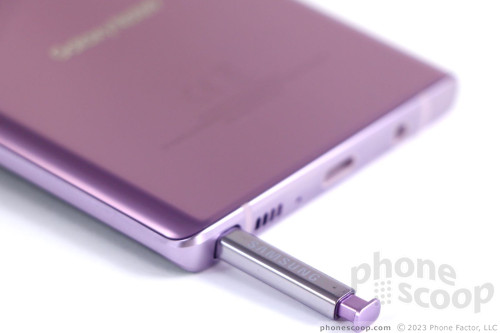
Samsung corrected the biggest problem with last year's Note: the location of the fingerprint reader. The Note8 featured a reader placed to the right of the camera array, a spot many found awkward. The Note9's fingerprint reader is centered below the camera module, right where it should be. The reader is indented just a small amount, which helps you find it by feel. The camera module itself is a raised rectangle. It houses the two cameras, flash, and heart rate monitor. These are the only physical features that adorn the otherwise smooth piece of colored glass on the back of the phone.
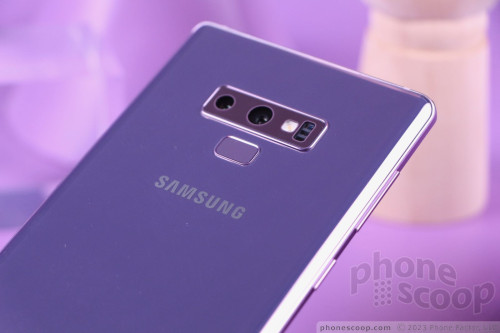
I wish I could tell you that the Note9 is a wholly new and different phone from the Note8, but it isn't. It's a humongous metal-and-glass phone that leaves an impression.
Screen
Samsung boosted the size of the Super AMOLED Infinity Display a smidge from 6.3 inches to 6.4 inches. It maintains the quad HD+ (2,960 x 1,440) resolution and offers a pixel density of 514ppi. It's an incredible display; the best I've seen. The clarity of the screen is unmatched. Colors are boosted perhaps a bit, but not as unrealistically as previous Samsung AMOLED screens. The Note9 puts out plenty of light, ensuring you can see the display clearly in even the brightest lighting conditions. The glass manages to keep fingerprints at bay thanks to an oleophobic coating. Viewing angles are fantastic, with no color shift or brightness loss. It's impressive to the Note degree.
Most modern flagships allow you to adjust the behavior of the display and the Note9 is no different. It offers owners several color modes to choose from as well as now-standard features such as a blue light filter for nighttime reading. You can also adjust the resolution if you wish, which has the benefit of saving battery life.
Signal
The Note9 is being sold by all U.S. carriers, as well as unlocked by Samsung directly. The Note9 packs a Cat 18 LTE modem, which permits (theoretical) speeds up to 1.2 Gbps. It supports every single frequency band currently used by U.S. carriers — including band 71 — though it's worth noting that carrier-branded models may not have all the bands turned on for other carriers.
I tested the unlocked Galaxy Note9 on AT&T and Verizon in and around New York City. The phone delivers fantastic wireless performance. The Note9 always remained connected to the network, whether the signal was strong or weak. The Note9 was able to connect all calls on the first dial. It maintained calls over long distances at highway speeds, and didn't drop any calls while I tested it.
The phone delivered zippy data speeds, allowing me to upload photos to Instagram or Twitter in a few blinks. Streaming high-quality music from Spotify and high-definition video from Netflix over LTE didn't cause the Note9 to stutter or lag. The Note9 is among the fastest phones I've tested.
Sound
The Note9 is the voice phone we should all expect to have in the year of our lord 2018. Phone call quality is excellent. The earpiece delivers clear, loud sound with a warm tone. I had no trouble hearing calls when on city streets, at home, or in the car. People I spoke to through the phone said I sounded very good.
The HD Voice calls that I connected via AT&T offered clarity beyond what I've ever heard before.
The speakerphone is similarly good. I was able to keep the volume set at about 50% most of the time. You may need to turn it up when in a moving car. I'm pleased that the Note9 doesn't suffer from distortion when cranked all the way up.
The Note9 includes stereo speakers. Like we've seen from Apple, HTC, and others, the Note9 uses the earpiece and bottom-firing speaker to create stereo sound. The earpiece produces more treble-y tones, while the bottom speaker produces more bass-y tones. Samsung did a fine job ensuring that the effect is relatively even when you hold the phone sideways. I was very pleased with the quality when listening to music or watching video. Moreover, it's loud enough to provide an average-sized room with a soundtrack.
Ringers and alerts were more than loud enough to get my attention, and the vibrate function always did its job. I like that the Note9 allows you to control the intensity of the vibrate alert as well as select from a range of alert patterns.
Battery
The Note9 is 1mm wider and 0.2 ounces heavier than the Note8, in part to accommodate the larger battery. Samsung crammed a huge 4,000mAh battery into the Note9, a power cell that's 25% bigger than last year's phone.
Over a week of testing, I found the Note9 consistently handled a full day of heavy use with power to spare. I pushed the phone intensely, taking scores of pictures while checking email, tweeting, browsing Instagram, and watching Netflix. The phone nearly always had 20% battery left at the end of the day. The Note9's battery won't leave you stranded.
The Note9 also includes three special modes to help maximize battery life, should you need that.
The phone supports Quick Charge 2.0 and Samsung's rapid wireless charging. When plugged into the included wired charger, I found the Note9 charged from 0% to 50% in 30 minutes. It took another 45 minutes to go from 50% to 100%. Bottom line: even 15 minutes on the charger will give you hours of uptime.
Bluetooth, GPS, NFC, WiFi
The Note9 packs all the best radios. Bluetooth 5.0+LE leads the way. The Note9 worked perfectly with all of the Bluetooth devices I tested, such as headsets, speakers, and my car. The Note9's software made pairing/connecting a mostly painless process. Phone calls sent to Bluetooth headsets sounded very good, while calls pushed to my car's hands-free system were excellent. With aptX HD on board, music streamed to stereo Bluetooth headphones also sounded excellent.
The Note9's GPS radio worked flawlessly with Google Maps. Maps was able to pinpoint me in a blink of an eye, and location was as accurate as 10 feet. The Note9 makes for a fine, real-time navigation device.
The NFC radio means the Note9 supports both Samsung Pay and Google Pay for making tap-and-go mobile payments. The Note9 also supports MST (magnetic strip) payments in Samsung Pay. Further, the NFC radio enables quick pairing with certain Bluetooth accessories.
The phone's dual-band WiFi radio was fantastic when it came to downloading HD movies over my home WiFi network.
Software
Lock Screen
The Note9's always-on lock screen is a decent space. The clock, date, battery percentage, and notifications are always visible as white text on the black screen. Notifications can range from simple badges to the full text of incoming messages. Samsung offers plenty of ways to adjust the Always On display to suit individual tastes, including different clock styles and swipeable widgets. It's good.
The easiest way to turn the screen on is to press the screen lock button on the right side of the phone. This lights up your wallpaper and notifications, while providing access to the Quick Settings menu, and lock screen shortcuts. You can also wake the display by pushing the software home button, a little square that sits at the bottom of the display. A simple tap won't do it; you need to long-press or double-tap this icon.
Only two shortcuts are available on the lock screen. The default is phone and camera, but you can configure them to something else.
The Note9 adopts the Intelligent Scan feature we first saw on the Galaxy S9+ earlier this year. Intelligent Scan combines face detection and iris scanning to improve accuracy and security even in low or bright light. You'll need to scan your face and then your irises. The phone will then look for both at the same time to recognize the owner and unlock the phone. You can't use Intelligent Scan and the fingerprint reader. You have to pick one or the other, (with a PIN, pattern, or password as a backup.)
Intelligent Scan isn't perfect, and certainly not as fast as Apple's Face ID on the iPhone X. You have to bring the phone up squarely in front of your face, and even then there are issues. The iris scanner doesn't like glasses, for example. Even so, Intelligent Scan does work rapidly enough that it can be a good alternative if your fingers aren't free to activate the fingerprint reader.
In its new (and proper) location, the fingerprint reader is a breeze to train and use. You'll find the fingerprint reader fast and accurate when used as your security option.
Home Screens
The Galaxy Note9 ships with Android 8.1 Oreo and the latest build of Samsung's user interface skin. I was hoping the phone might be the first to ship with Android 9 (Pie) out of the box, but that was wishful thinking. Samsung hasn't said if or when the Note9 might get Android 9. The Note9 is stacked with more software than most other devices.
By default, there's no app drawer icon. Swipe the home screen up or down and the app drawer will appear. I like this solution. It works splendidly, but you can add the app drawer icon back if you want to. The app drawer itself can be customized however you wish. My favorite feature? Samsung allows you to hide unused apps from view.
The Quick Settings panel is clean and a cinch to customize.
The main settings menu also uses nice colors and fonts. It's laid out in a single list for easy gleaning, but Samsung has added tons of options under each heading for adjusting the phone's behavior. You can spend forever tweaking small things, such as the number of apps that appear on home screen panels, how big the icons are, and which fonts are used.
The Note9 includes Samsung Pass, which we first saw on the S9/S9+ earlier this year. As long as you have a Samsung account (free), you can save your usernames and passwords for apps and web sites and protect them with Intelligent Scan or fingerprint ID. It sort of acts like 1Password. It works really well.
Samsung's Edge feature is on board, too. When activated, a thin tab appears on the right edge of the display to access the Edge screen. Edge screen consists of customizable, vertical banners that offer shortcuts to apps, actions, and info. For example, People Edge displays contacts, while App Edge shows app shortcuts.
You also have access to App Pairs, which let you pair together any two apps (email and browser, contacts and messaging, YouTube and Twitter, etc.) and launch them in a split-screen view. This is the ultimate power user maneuver.
The Note9 includes Samsung's Easy Mode, which is meant for people who may be new to smartphones. If you need Easy Mode, there are much cheaper big-screen phones with this feature. (If any phone is designed for power users, it's the Note9.)
Samsung's hand gestures are supported. These allow you, for example, to capture a screenshot by swiping the edge of your hand across the display, or call the displayed contact by bringing the phone to your ear. These aren't features I want or need; you can ignore them if you wish.
On the other hand, I do like accessing parts of the UI via gestures on the fingerprint reader. For example, you can use finger swipes to open or close select apps, or scroll through others.
Let's not forget split-screen multitasking, which the Note series invented. It's rather easy to get two apps up and running on the Note9's generously huge screen.
The Galaxy Note9 ships with the top-end Qualcomm Snapdragon 845 chip and a respectable 6 GB of RAM. The phone includes 128 GB of internal storage, which is easily twice that of most phones. If you want to spend lots of cash, you can opt for the 8 GB / 512 GB version, which is just whoa-levels of crazy.
The Snapdragon 845 offers unparalleled performance and it's the best chip in the industry for the moment. In addition to raw power, it packs machine learning features alongside a specially tuned GPU (says Samsung) to provide the best-possible performance. The Note9 is, indeed, the fastest phone I've tested to date. Every app launches in an instant and the user interface runs flawlessly. It's a splendidly quick phone that is sure to please even the most intense gamers.
Camera
The Note9's camera is most easily launched with a double press of the screen lock button. The camera app blinks open instantly.
A list of shooting modes appears on the left side of the viewfinder. You swipe the viewfinder back and forth to access the various shooting modes. Swipe up and down to switch to the selfie camera. The camera has separate picture and video buttons, which make it easy to snap photos while shooting video.
As far as the shooting modes are concerned, the Note9 includes food, panorama, pro, live focus, auto, super slow-mo, AR emoji, and hyperlapse. I dig that you can rearrange the order in which these modes are listed.
The big addition to the camera is automatic scene detection. Samsung says the Note9 can recognize 20 different scenes, such as food, sunsets, plants, flowers, and so on. The camera will then automatically adjust the settings to capture the best-possible photo for the given scene. When aimed at food items, plants, and flowers, the Note9 correctly identified each and made some adjustments to the software as it captured the photos. This all happens in the blink of an eye. It's a feature we've seen from Sony, Huawei, and LG; Samsung is playing a bit of catch-up here.
The Note9 also introduces Flaw Detection. The camera is smart enough to know when the photo you just took has blurred motion, or too much backlight, or closed/blinking eyes. WHen it notices a problem the camera will gently nudge you to re-take the shot. I tested this by having my kids blink and it worked as advertised. Neat!
The other tools work about as well as expected. Samsung's super slow-motion is still a bit tricky to use correctly, but the results are awesome when you get it right. The AR Emoji feature is far more robust than it was when it first appeared on the Galaxy S9/S9+ six months ago thanks to new characters from Disney. I like that it creates a couple dozen GIFs of your personalized character for easy sharing.
The Note9 supports 2x optical zoom via the second camera. There's a simple "X2" button in the viewfinder. Tap it to automatically jump in by a factor of two. You can also use the slider tool to adjust zoom. The camera app will rely on the main lens until it reaches 1.9x, then it will switch over to the telephoto lens.
The pro mode is pretty hardcore. It lets you tweak the camera's settings, including exposure, white balance, autofocus, color, shutter speed (up to 10 seconds), and ISO. I like that the pro mode lets you manually switch the main camera lens between its f/1.5 and f/2.4 apertures. This gives you even more creative control over your photos.
The Note9 includes Samsung's Bixby Vision, but not Google Lens. Bixby Vision relies on artificial intelligence to help you figure out what you're looking at. Bixby Vision can read/translate text in real time, read QR/barcodes, and help you shop with location-based suggestions.
The camera performs speedily.
Photos/Video
The Note9 carries over the camera setup we saw on the S9+ earlier this year. The main camera has a 12-megapixel sensor with variable aperture that can switch between f/1.5 and f/2.4. The Note9 will shoot at f/2.4 most of the time, and automatically switch to f/1.5 in low light conditions. The Note9 also has a second 12-megapixel camera at f/2.4 with a 2x telephoto lens.
The phone captures fabulous photos. Focus is generally excellent and white balance was nearly always spot-on. Exposure will vary. The f/1.5 aperture goes a long way to brighten up exposures that might otherwise be too muddy, though this comes at the expense of detail and grain. I like that you can manually flip the aperture if you want.
Having a telephoto lens is nice. It offers 2x optical zoom when compared to the regular lens and can zoom in even further digitally if you wish. This is something I put to use often. Of note, the telephoto delivers much better performance than the last year's Note8; it takes sharper, brighter pictures.
The Note9 has an 8-megapixel user-facing camera at f/1.7 with a screen-based flash and, unusually, auto-focus. The selfie cam does an excellent job. Portraits I captured of myself were sharp and well-exposed. You can apply the AR Emoji tools for some added fun.
As for video, the Note9 captures resolutions up to 4K. When you shoot in full HD, you'll have access to helpful features such as HDR capture, video effects, and tracking autofocus. These lead to great results. Video is sharp, rich in color, and properly exposed. The HDR video capture mode does a great job. The tracking autofocus function is particularly helpful if your subject is moving all over the place.
The Galaxy Note9 is best-in-class when it comes to photography. It can serve pretty much all your picture and video needs.
S Pen
The S Pen may be the standout feature of the Galaxy Note. This year's S Pen includes its own Bluetooth radio so it can control the phone from up to 30 feet away.
By default, a long press of the S Pen button launches the camera application. Once the app is open, a quick press fires the shutter while a long press switches to the selfie cam. I can't stress enough how awesome and helpful this is. No longer will you need to rely on a timer for those group shots, nor contort yourself awkwardly to take a selfie.
You can customize the S Pen's remote behaviors to a degree. The tools are in the settings menu and allow you to set the default action for each app. It also interacts with the gallery to advance between photos, the media app to play/pause and skip tracks, Chrome to navigate back/forward a page, and the Hancom Office Editor to advance its slide show presentation. Samsung is offering developers an SDK so they can adjust their own apps to take advantage of this new tool.
The rest of the S Pen's features are carried over from last year's Note8. Air Command can be set to turn on when the stylus is removed from the phone. It supports up to eight customizable app shortcuts. Air Command is the base for accessing the S Pen's other functions.
Air Command
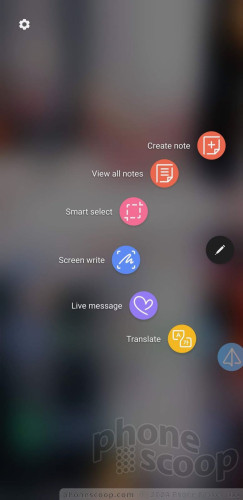
I really like the Live Message feature, which you can use to animate a scribbled message and then share it with others. Screen Off Memo lets Note9 owners write directly on the lock screen without unlocking the handset. You can then pin memos on the lock screen so they are accessible at a moment's notice even when the phone itself is locked. It works well.
Live Memo
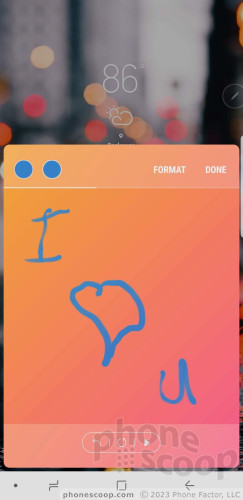
The S Pen still includes the translate function and it works better than ever. With it, you can translate entire sentences and/or phrases from 30 different languages just by highlighting them with the S Pen. It handled Spanish-to-English really well.
The PenUp tool is a free-range drawing app that targets illustrators. Smart Select is available to help grab content from web sites, and Screen Write is for doodling on screenshots. All three work well and are helpful in their own way.
Note
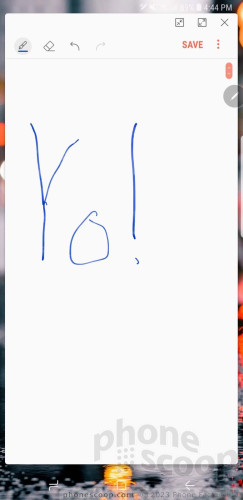
Wrap Up
The Note9 is an exceptional phone. It does nearly everything better than most other devices and looks good while doing it.
Samsung may have recycled the design, but the hardware is still top notch. You won't find a finer metal-and-glass device. The screen is incredible, call quality is the best I've heard, and battery life is as good as it gets. Add in speedy mobile data and the Note9 handily conquers the basics.
Samsung's user interface may be overwrought, yet it's as powerful as ever. It allows owners to adjust nearly every aspect of the experience while providing useful and helpful features along the way. The camera application is particularly flexible and benefits from the added S Pen functionality. The stylus works well and completes the Note.
The Galaxy Note9 costs a pretty penny. The 6 GB / 128 GB model costs $1000, while the 8 GB / 512 GB model costs a whopping $1250. Carriers are selling the device at various monthly rates. I strongly suggest you trade in an old phone when purchasing the Note9.
Would I recommend the Note9? To those who truly use the stylus, the answer is wholeheartedly yes. If you're likely to leave the S Pen unused, the S9+ makes a lot more sense. The Note9 is the best at what it does, and does it all for you.

Comments
Where do they find these ugly colors?
(continues)


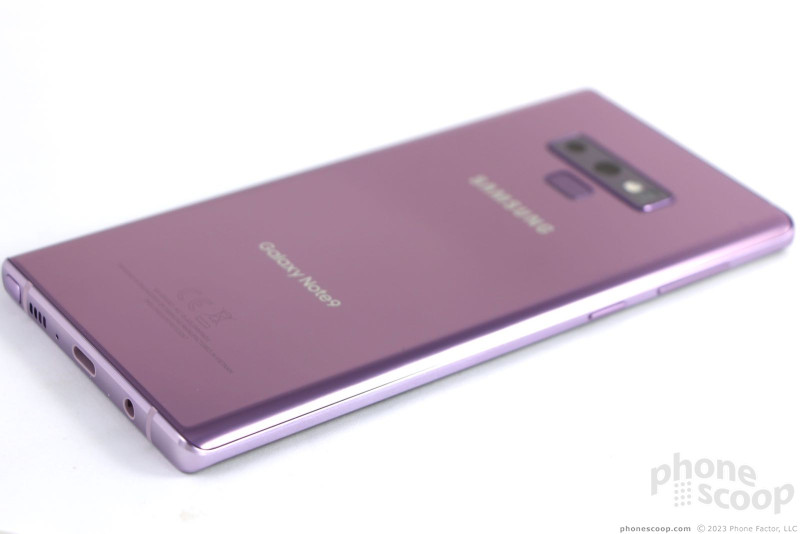































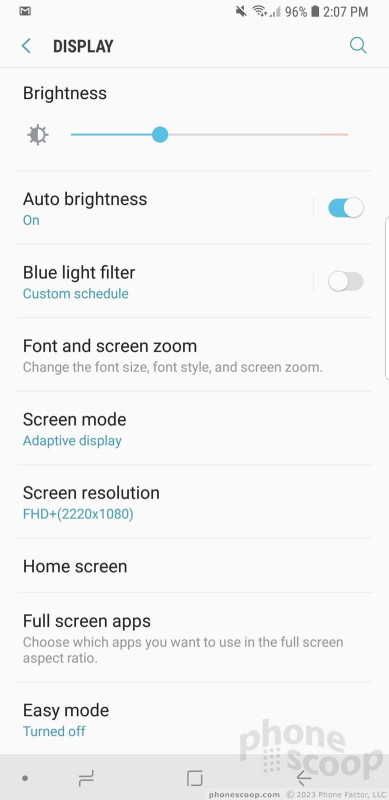









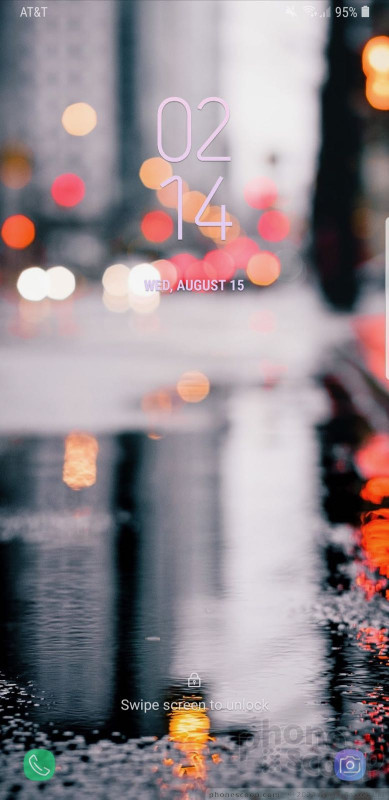





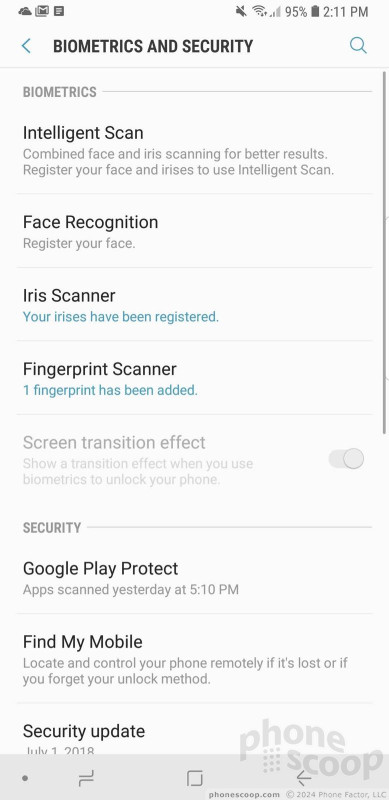















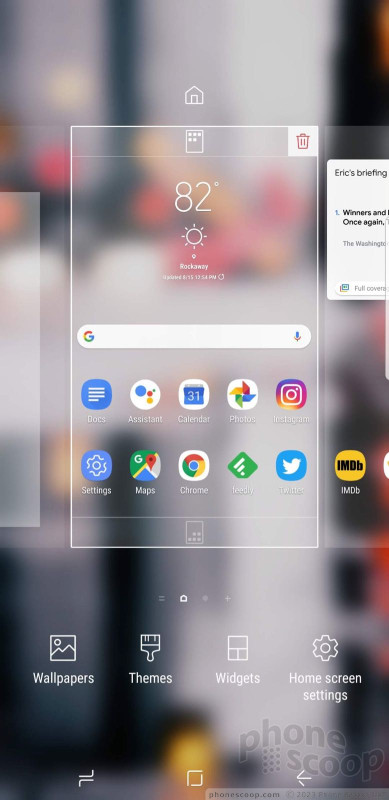









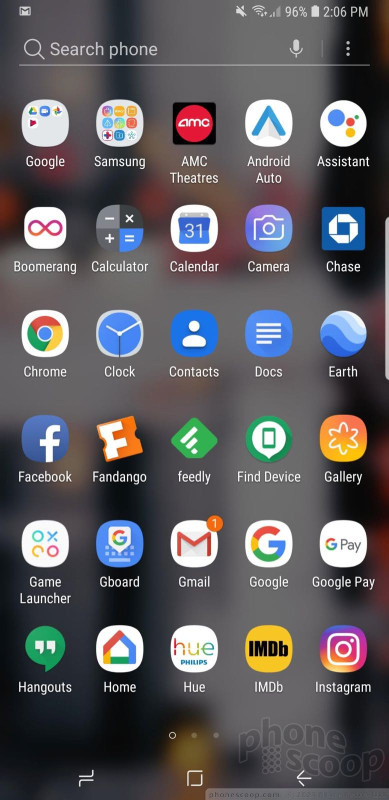





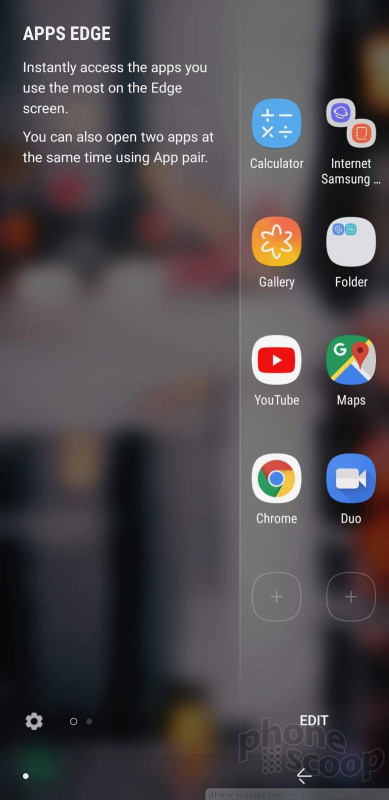




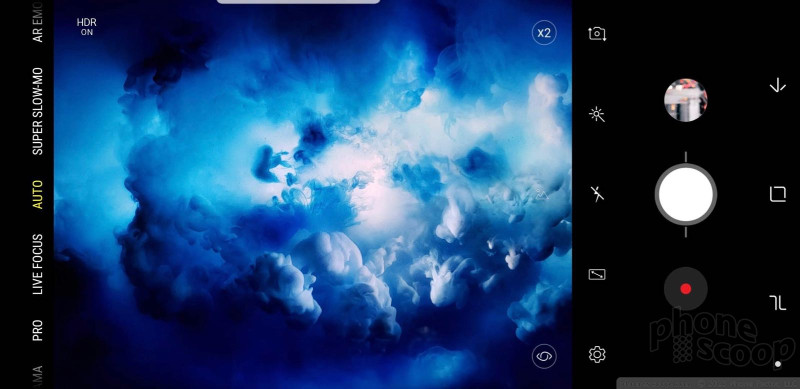





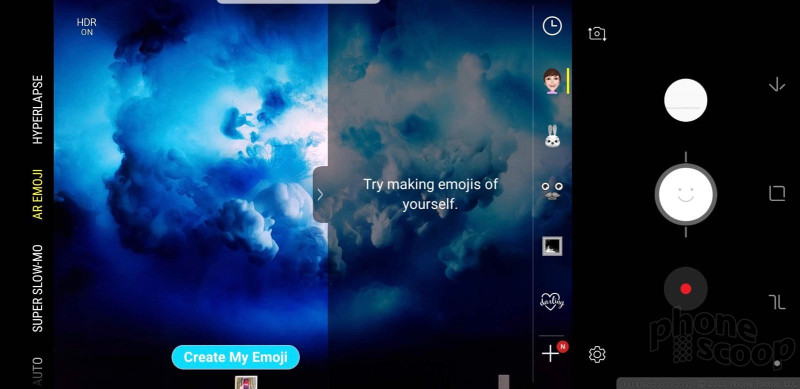




























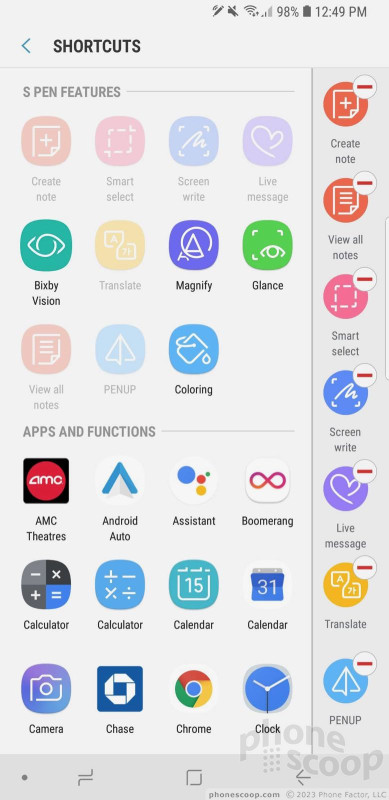







 Review: LifeProof Next Case for Samsung Galaxy Note9
Review: LifeProof Next Case for Samsung Galaxy Note9
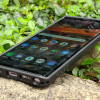 Review: Catalyst Impact Protection Case for Samsung Galaxy Note9
Review: Catalyst Impact Protection Case for Samsung Galaxy Note9
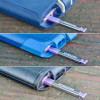 Review: Otterbox Symmetry, Commuter and Defender Cases for the Samsung Galaxy Note9
Review: Otterbox Symmetry, Commuter and Defender Cases for the Samsung Galaxy Note9
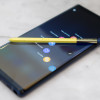 Hands On with the Samsung Galaxy Note9
Hands On with the Samsung Galaxy Note9
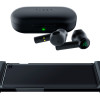 Razer Intros Gaming Accessories for 3rd-Party Phones
Razer Intros Gaming Accessories for 3rd-Party Phones
 Samsung Galaxy Note9
Samsung Galaxy Note9






